Man-made rotary nanomotors: a review of recent developments
- PMID: 27152885
- PMCID: PMC4873439
- DOI: 10.1039/c5nr08768f
Man-made rotary nanomotors: a review of recent developments
Abstract
The development of rotary nanomotors is an essential step towards intelligent nanomachines and nanorobots. In this article, we review the concept, design, working mechanisms, and applications of state-of-the-art rotary nanomotors made from synthetic nanoentities. The rotary nanomotors are categorized according to the energy sources employed to drive the rotary motion, including biochemical, optical, magnetic, and electric fields. The unique advantages and limitations for each type of rotary nanomachines are discussed. The advances of rotary nanomotors is pivotal for realizing dream nanomachines for myriad applications including microfluidics, biodiagnosis, nano-surgery, and biosubstance delivery.
Figures
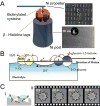

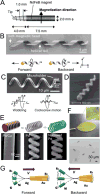

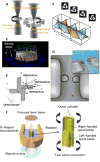



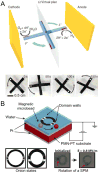
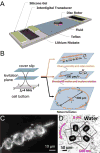
Similar articles
-
Electric-Field-Guided Precision Manipulation of Catalytic Nanomotors for Cargo Delivery and Powering Nanoelectromechanical Devices.ACS Nano. 2018 Feb 27;12(2):1179-1187. doi: 10.1021/acsnano.7b06824. Epub 2018 Jan 16. ACS Nano. 2018. PMID: 29303550
-
Fuel-Free Synthetic Micro-/Nanomachines.Adv Mater. 2017 Mar;29(9). doi: 10.1002/adma.201603250. Epub 2016 Dec 27. Adv Mater. 2017. PMID: 28026067 Review.
-
Recent Progress on Man-Made Inorganic Nanomachines.Small. 2015 Sep 2;11(33):4037-57. doi: 10.1002/smll.201500407. Epub 2015 Jun 26. Small. 2015. PMID: 26114572 Review.
-
Precise control of CNT-DNA assembled nanomotor using oppositely charged dual nanopores.Nanoscale. 2023 Jul 6;15(26):11052-11063. doi: 10.1039/d3nr01912h. Nanoscale. 2023. PMID: 37350160
-
Light-Powered Micro/Nanomotors.Micromachines (Basel). 2018 Jan 23;9(2):41. doi: 10.3390/mi9020041. Micromachines (Basel). 2018. PMID: 30393317 Free PMC article. Review.
Cited by
-
Metareview: a survey of active matter reviews.Eur Phys J E Soft Matter. 2025 Mar 4;48(3):12. doi: 10.1140/epje/s10189-024-00466-z. Eur Phys J E Soft Matter. 2025. PMID: 40035927 Free PMC article. Review.
-
On the shape-dependent propulsion of nano- and microparticles by traveling ultrasound waves.Nanoscale Adv. 2020 Jul 21;2(9):3890-3899. doi: 10.1039/d0na00099j. eCollection 2020 Sep 16. Nanoscale Adv. 2020. PMID: 36132771 Free PMC article.
-
Oxygen Generation Using Catalytic Nano/Micromotors.Micromachines (Basel). 2021 Oct 15;12(10):1251. doi: 10.3390/mi12101251. Micromachines (Basel). 2021. PMID: 34683302 Free PMC article. Review.
-
Acoustically propelled nano- and microcones: fast forward and backward motion.Nanoscale Adv. 2021 Oct 26;4(1):281-293. doi: 10.1039/d1na00655j. eCollection 2021 Dec 21. Nanoscale Adv. 2021. PMID: 36132955 Free PMC article.
-
Multipolar Pseudochirality-Induced Optical Torque.ACS Photonics. 2023 Sep 7;10(9):3275-3282. doi: 10.1021/acsphotonics.3c00696. eCollection 2023 Sep 20. ACS Photonics. 2023. PMID: 37743946 Free PMC article.
References
-
- Feynman RP. Eng Sci. 1960;23:22–36.
-
- Ozin GA, Manners I, Fournier-Bidoz S, Arsenault A. Adv Mater. 2005;17:3011–3018.
-
- Wang H, Pumera M. Chem Rev. 2015;115:8704–8735. - PubMed
-
- Sundararajan S, Lammert P, Zudans A, Crespi V, Sen A. Nano Lett. 2008;8:1271–1276. - PubMed
-
- Burdick J, Laocharoensuk R, Wheat PM, Posner JD, Wang J. J Am Chem Soc. 2008;130:8164–8165. - PubMed
Publication types
Grants and funding
LinkOut - more resources
Full Text Sources
Other Literature Sources

